Related Research Articles

The Banque de l'Indochine, originally Banque de l'Indo-Chine, was a bank created in 1875 in Paris to finance French colonial development in Asia. As a bank of issue in Indochina until 1952, with many features of a central bank, it played a major role in the financial history of French Indochina, French India, New Caledonia, French Polynesia, and Djibouti, as well as French-backed ventures in China and Siam. After World War II, it lost its issuance privilege but reinvented itself as an investment bank in France, and developed new ventures in other countries, such as Saudi Arabia and South Africa.

Banque Indosuez was a French bank, the product of the 1975 merger of Banque de l'Indochine and Banque de Suez et de l'Union des mines. It was purchased by Crédit Agricole in 1996, and formed the core of what is now Crédit Agricole Corporate and Investment Bank. As of 2022, its brand survives in Indosuez Wealth Management, the Crédit Agricole group's wealth management arm.
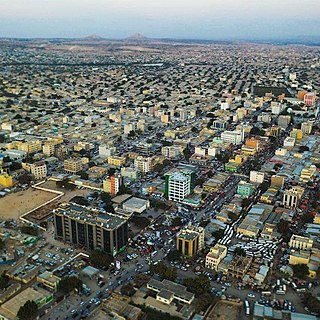
The economy of Somaliland largely relies on primary production and agriculture, where livestock is the main export of the country, which it ships to neighbouring Djibouti and Ethiopia, as well as to Gulf states, such as UAE, Saudi Arabia and Oman. Somaliland has a GDP per capita of $1061 and a gross domestic product GDP of $6,583,000,000 as of 2024, most of which it receives in remittances from Somalis working abroad. The COVID-19 pandemic has restricted Somaliland's trade flows with decreased demand in the agriculture sector, a significant source of tax revenue.
Banque pour le Commerce et l'Industrie – Mer Rouge (BCIMR) is a bank in Djibouti. It has a market share of around 45%, and is the largest bank in the Horn of Africa. BCIMR is a subsidiary of the French bank BRED Banque populaire, which owns a 51% share in the company. The Government of Djibouti and a Yemeni bank own the remaining 33% and 16% shares, respectively. BCIMR has a branch in Hargeisa, situated in the self-declared Republic of Somaliland, internationally considered to be part of Somalia.

Mauritius Commercial Bank (MCB) is a commercial bank in Mauritius. MCB is licensed by the Bank of Mauritius, the country's central bank and the nation's banking regulator. The bank's headquarters are located in Port Louis, Mauritius.
Wafabank was a private bank in Morocco. It was the successor in Morocco of the Compagnie Algérienne, which had established its first Moroccan branch in Tangier in 1904, later complemented by branches in Casablanca and other Moroccan cities. By 1959, the Compagnie Algérienne had 38 branches in Morocco, the largest network in the country.

The Crédit Lyonnais was a major French bank, created in 1863 and absorbed by former rival Crédit Agricole in 2003. Its head office was initially in Lyon but moved to Paris in 1882. In the early years of the 20th century, it was the world's largest bank by total assets.
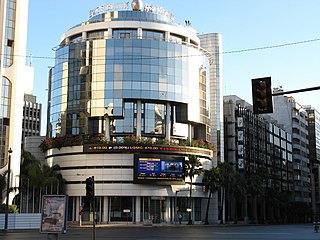
Bank of Africa (BOA) is an international financial services group headquartered in Casablanca, Morocco. It was formed by the 2010 acquisition of Bank of Africa by the Banque Marocaine du Commerce Extérieur, following which BMCE rebranded itself as Bank of Africa in 2020. The BMCE brand survives in the line "BMCE Group" which was incorporated in the BOA brand identity.
Banque Française Commerciale Océan Indien (BFCOI) is a French bank that since 2003 has been jointly owned by Mauritius Commercial Bank and Société Générale. It has its headquarters in Saint Denis, Réunion. It has more than 360 employees and more than 80 000 clients in its operations in Réunion, Mayotte, and Paris, which primarily engages in private banking.
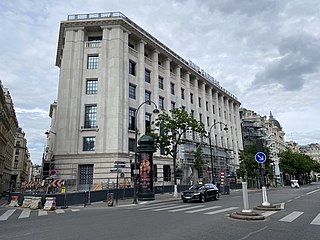
The Banque nationale pour le commerce et l'industrie was a major French bank, active from 1932 to 1966 when it merged with Comptoir national d'escompte de Paris to form Banque Nationale de Paris (BNP). It was itself the successor of the Comptoir d'Escompte de Mulhouse, a bank founded in 1848 under the Second French Republic that had become German following the Franco-Prussian War, and its French subsidiary formed in 1913, the Banque Nationale de Crédit.
Banca Leonardo is an Italian independent investment bank based in Milan. It operates through its own brand and through its subsidiaries with a focus on the wealth management business in Italy.
Bank of Africa Kenya Limited, is a commercial bank in Kenya. It is one of the commercial banks licensed by Central Bank of Kenya, the country's central bank and the national banking regulator.
Banque Libano-Française is a Lebanese bank holding number 10 on Banque du Liban List of Banks. It was established as a joint stock company in 1967. Its head office is located at the Beirut Liberty Plaza Building, Hamra District, Beirut, Lebanon.
The Djiboutian Women's Championship is the top flight of women's association football in Djibouti. The competition is run by the Djiboutian Football Federation.
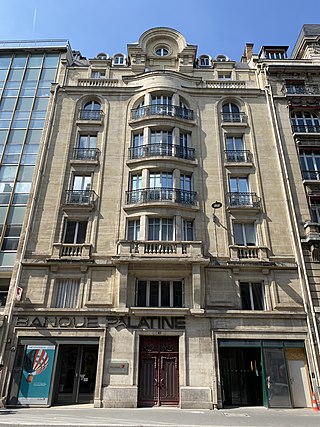
The Franco-Chinese Bank, in French Banque Franco-Chinoise (BFC), full name Banque Franco-Chinoise pour le Commerce et l’Industrie, was a French bank with operations in China and French Indochina, and later in the Indian Ocean and the French West Indies. In 1925 it succeeded the Société française de gérance de la Banque industrielle de Chine, an asset management company that had been formed in October 1922 following the closure of the Banque Industrielle de Chine.
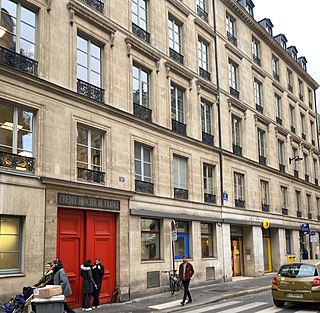
The Compagnie Algérienne, from 1942 to 1948 Compagnie Algérienne de Crédit et de Banque, was a significant French bank with operations in Algeria, Morocco, Tunisia and Lebanon as well as mainland France. It was formed in 1877 in a restructuring of its predecessor entity, the Société Générale Algérienne, itself founded in 1865-68. The Compagnie Algérienne eventually merged in 1960 with the Banque de l'Union Parisienne. Following a series of subsequent restructurings, its main successor entities as of 2022 are the Crédit du Nord in France, the Crédit populaire d'Algérie in Algeria, the Banque de Tunisie in Tunisia, Attijariwafa Bank in Morocco, and the Banque Libano-Française in Lebanon.
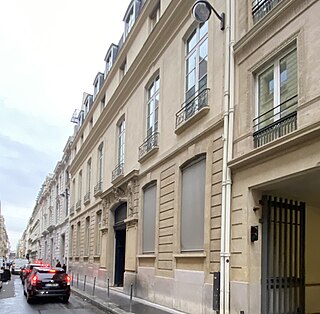
The Crédit Foncier d'Algérie et de Tunisie was a French colonial bank. It was originally founded in 1880 as the Crédit Foncier et Agricole d'Algérie, an Algerian affiliate of Crédit Foncier de France, and took its name CFAT in 1909 following expansion to Tunisia. In 1963, following Algerian independence, it renamed itself as Société Centrale de Banque (SCDB). It was acquired by Société Générale in 1971 and eventually absorbed by it in 1997. Its former overseas operations have become part of Banque Nationale d'Algérie in Algeria, Amen Bank in Tunisia, Société Générale in Morocco, and Fransabank in Lebanon.